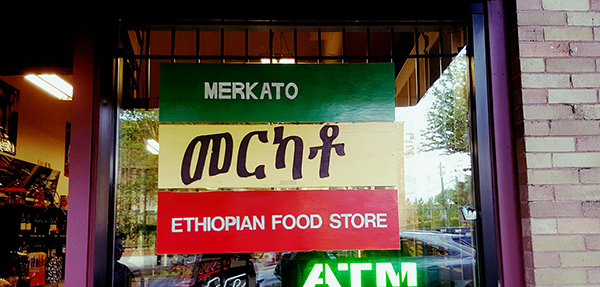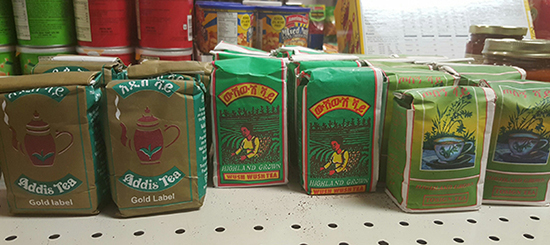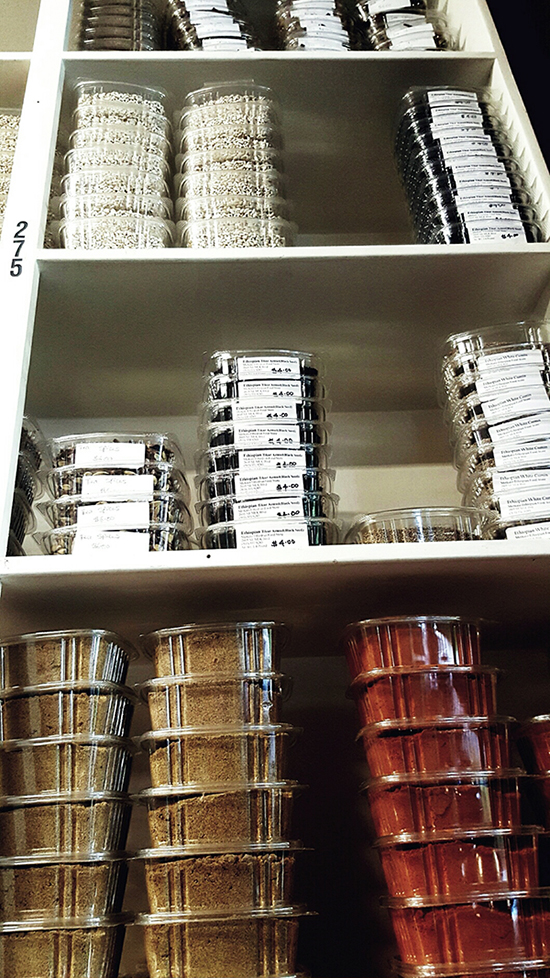Global Grocery: Africa

African markets in Portland could at one time be found in a few quadrants. Today, there are barely just a handful and they’re all in NE, waiting for you to come in. Introduce yourself to the hearty, approach Africa has to food and Ethiopian techniques that will give cooking ceremonies new life.

Merkato
2605 NE MLK Jr. Blvd
503-331-9283
Named for the open-air market inside Addis, Ethiopia, Merkato looks very unassuming in comparison to its namesake. However, you’ll find helpful staff, a bewildering wall of spices (like Besobula), Gesho (type of bread), and beverages of all sorts. Merkato specializes in Ethiopian food but many of the spice bases will play well in other dishes.
What to go for: The Peabody coffee beans and the special blend of spices meant to be ground with the coffee, post roasting and before percolation. It’s a mix of cardamom, cinnamon and other aromatics
Downside: Not as many flours such as yam flour, unless it’s in 50lb bags.
Monies: $

Mama Pauline’s
4606 NE MLK Jr. Blvd
503-281-6264
mamapaulines.com
Mama Pauline’s is a good complement to Merkato, as it carries more to-go items for the week ahead, namely frozen foods and ready-made sauces from spice blends you might find at Merkato. It also carries items that tip a hat to southern cooking.
What to go for: The large selection of flour if you’re there for food; fabric and jewelry if you’re there for trinkets.
Downside: Lacking diverse spices. Expect jerk-style pepper mixes.
Monies: $-$$

That’s hot! Hints on predicting fire levels in your spices
African spices are dizzying. Cumin, for instance, has three varieties including the hard to find white cumin. There is also brown and black cumin. Cumin has a caraway flavor to it, but in this case is headier. Peppers are frequently added to herb and spice mixtures. Typically. if something is red, it is very hot, but look for the word Berbere. Generally it is a specific red mixture of spices.
Wine, the Attis way:
Enat, Ethiopian honey wine, is delicious. Unlike ice or honey wines that we find in the States, which rely on seasonal cold snaps or sometimes floral additives, T’ej (the general term for Ethiopian honey wine) is a much simpler recipe that many brew in their homes. It has a rich honey flavor with understated musky scents and is brewed using a collection of herbs and sweet twigs.

To make T’ej, a cup of honey is mixed with 6-7 cups of water and stirred. The next day, the impurities are removed from the top of the liquid. Gesho is heated with it, which then ferments overnight. Depending on region, the brew can be kept just 4 or 5 days or upwards of 9 days before being filtered and mixed with more honey.
More more information on how to make T’ej visit: ethiopiantej.wordpress.com/author/atokitfo